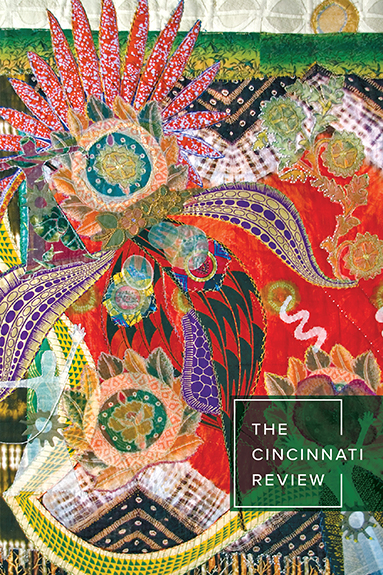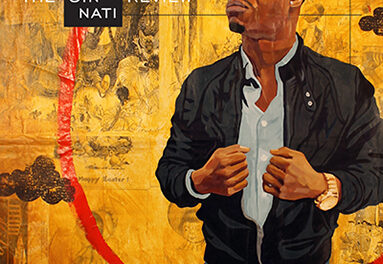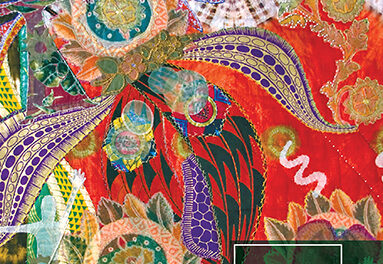In Issue 20.1, we present a craft review feature celebrating the art of extraordinary writing. The feature was inspired by Holly Goddard Jones’s “Unreasonably Good Stories: Breaking the Competency Ceiling,” and we’re pleased to share here Shannon Fandler’s contribution to the conversation. (Read the entire feature here.)
The Collected Schizophrenias. Esmé Weijun Wang. Graywolf, 2019. 224 pp. $16.00 (paper).
In her 1905 essay “The Decay of the Essay,” Virginia Woolf grumbles about writing that begins “with a capital I.” At first glance, her complaint is reminiscent of those who rail against the personal essay as an exercise in naval-gazing. But Woolf’s criticism is aimed at the “I” that gazes outward, not the introspective one. She decries the “I” that shares uninformed opinions about art, music, and literature, and urges anyone with an essayistic impulse to instead write about their life, “that single book to which they alone have the key.”
Of course, Woolf acknowledges that writing honestly about oneself is uncommonly hard: “Confronted with the terrible spectre of themselves, the bravest are inclined to run away or shade their eyes.” I know the feeling—I have a progressive disability that I spent much of my life trying to ignore, and to write honestly about myself, I needed to confront “spectres” ranging from long-lived shame to the fear of making a mistake in a community with competing disability discourses. Instead, for my MFA thesis, I plowed ahead with a writing project about pilgrimages that only ever circled the reasons I, a lapsed Catholic and devoutly unspiritual person, had walked seventy miles of the Camino de Santiago and also traveled from Philadelphia to New Mexico solely to visit El Santuario de Chimayó, a New Mexican pilgrimage site cherished for its holy dirt. Because of my own reluctance, I’ve wondered what options are available to the nonfiction writer still trying to find their way to and through their subject.
Esmé Weijun Wang’s essay collection, The Collected Schizophrenias (Graywolf, 2019), showed me an approach to writing about disability that deftly handled everything I was afraid of—including finding the courage to write despite not having all the answers. Wang has late-stage Lyme disease and schizoaffective disorder, a mental illness that combines symptoms of schizophrenia with mania or depression. Wang writes that while “other human catastrophes can bear the weight of human narrative[,] . . . schizophrenia’s built-in chaos resists sense.” Her ability to make “sense” of her experiences is tied to her capacity for insight, which she fears losing to her illness. Some essays in the collection deploy the shaky hindsight of remission: the right combination of medications seems to have put the most serious of her delusions behind her. But others cleave closer to the subject—Wang writes portions of the essay “Perdition Days” while experiencing Cotard’s delusion, a type of psychosis in which the patient believes they are dead. At first, the delusion brings elation; Wang assumes she has been given a do-over in the afterlife. Her joy is quickly replaced by the belief that “I was doomed to wander forever in a world that was not mine, in a body that was not mine; I was doomed to be surrounded by creatures and so-called people who mimicked the lovely world that I’d once known.”
Wang confronts the “spectre” of herself also in parsing how her feelings about her mental illness both do and do not reflect mainstream and activist discourses. Twice exceptional, Wang shares a psychological diagnosis with just 0.3 percent of the American population, and she’s also intellectually gifted, having attended Yale and Stanford and worked as a researcher at a prestigious lab. Appearing “high-functioning” is an attempt to guarantee that she can keep moving freely in the world—Wang has experienced involuntary hospitalization and dreads a recurrence. This choice is also about survival of the ego: a first-generation American, she’s a high achiever who has long derived her self-worth from her ability to not just keep it together but surpass others’ performance.
In the essay “High-Functioning,” Wang pokes fun at the steps she takes to distance herself from stereotypes about schizophrenia, including dressing in designer clothes, flashing her wedding ring, eating “potato skins in Irish bars,” and conveying at every opportunity that she has attended Yale. She admits that she is reluctant to identify with those who share her diagnosis: “I’m uncomfortable because I don’t want to be lumped in with the screaming man on the bus, or the woman who claims that she’s the reincarnation of God. I’m uncomfortably uncomfortable because I know that these are my people in ways that those who have never experienced psychosis can’t understand, and to shun them is to shun a large part of myself.” By articulating her “uncomfortably uncomfortable” feelings, Wang avoids a common pitfall of personal writing: trading ambivalence and acknowledgment of complicity for a more politically empowering stance. When she’s surviving her day-to-day life, Wang’s biggest risk lies in the slippage of her high-functioning mask. But the page presents different risks—reinforcing negative stereotypes, adding her voice to an already damning chorus. The “spectres” of ourselves aren’t ours alone; they reflect all that haunts the world we live in. Wang worries about lending credence to neurotypical bias by treating schizophrenia as a terrible affliction but asserts, “I also believe in the suffering of people diagnosed with the schizophrenias.” She weighs the idea that schizophrenia confers creative or spiritual gifts but ultimately concludes, “If creativity is more important than being able to maintain a sense of reality, I could make a plausible argument for remaining psychotic, but the price of doing so is one that neither I nor my loved ones are likely to choose to pay.”
In identifying why I found The Collected Schizophrenias so “unreasonably good” when I read it a few years ago, my initial thought was that it’s precisely Wang’s reasonableness—her self-awareness, her commitment to examining her subject from all angles—that makes her work exceptional. But on one hand, demonstrating reason is a fairly low bar for essays, even in these rhetorically troubling times. On the other hand, the concept of reasonableness has long been used to silence those speaking out against injustice—after all, the American eugenics movement of the twentieth century used science and “reason” to promote state-sponsored horrors such as the forced sterilization of disabled people.
Perhaps it’s out of that last concern that some nonfiction writers feel guilty for reining in their emotions on the page.When you’re writing about what’s nightmarish, self-aware gestures can seem too conciliatory. But does the impulse to be unreasonable undermine the strengths of the essay?
Phillip Lopate writes in To Show and to Tell (Free Press, 2013), his primer on literary nonfiction, that essayists are sometimes tempted to “heat up the form, make it more irrational.” Lopate urges readers not to “disdain the classic mandate of the nonfiction writer to make sense of the world, to tell about it in lucid, rational terms.” He praises autobiographical accounts by Daniel Paul Schreber, a German judge who had schizophrenia, and Louis Althusser, a French Marxist philosopher who strangled his wife and was committed to a psychiatric hospital; in these accounts, Lopate observes, the authors seemed “compelled to hold tightly to whatever shards of sanity still existed, by trying to relate the horrible experience of losing their minds.” While it’s preposterous to think that sanity can be retained through sheer willpower, Lopate implies that it can be achieved as part of the editorial process. And maybe he’s right, to a point—technologies continually reframe human limits. Being able to revisit and revise could help writers work around and interpret periods of illness. (Assuming there are such interludes—as Wang puts it, “When the self has been swallowed by illness, isn’t it cruel to insist on a self that is not illness?”)
A somewhat opposing pitfall is what Leslie Jamison describes in her essay “Grand Unified Theory of Female Pain” as the “post-wounded” affect. Jamison finds that writers—especially women—exploring their psychic or physical pain often worry about seeming self-pitying or short on perspective: “What I’ll call ‘post-wounded’ isn’t a shift in deep feeling (we understand these women still hurt) but a shift away from wounded affect: These women are aware that ‘woundedness’ is overdone and overrated. They are wary of melodrama, so they stay numb or clever instead.”
Instead of asking women to rationalize or contain their pain, Jamison wants “our hearts to be open.” Writing rationally about a painful subject while keeping an open heart is a challenge Wang conquers through her maximalist, questioning approach. She ranges from deploying clinical detachment to making acerbic, self-aware jokes to zooming in on the details of her suffering. She’s unflinchingly critical of what people with mental illness have to go through as they seek the lives they want, yet she acknowledges that the solutions aren’t always clear and can sometimes cause more harm. She believes in “science and authority” but writes toward the point where knowledge reaches its limits.
In “Chimayó,” Wang describes her pilgrimages to Saint Roch Chapel, a shrine in New Orleans where pilgrims leave their prosthetic limbs as offerings, and to Chimayó, where I never bothered to collect any holy dirt even though I’d traveled so far to it. Pilgrimages have a fascinating relationship with disability—pilgrims have long journeyed to spiritual sites in hope of a cure, which had figured into my interest in a nonliteral way. But historically, people also made pilgrimages when old age, illness, or disability meant they could no longer perform heavy labor and finally had time to take a long trip. Even if undertaken in pain or in the face of impending death, a pilgrimage would have been a once-in-a-lifetime vacation on which the wine flowed and touristic delights rivaled spiritual ones. It would have been a chance to meet others who understood if not the full complexity of one another’s motivations, at least the impulse to take—like Wang’s “I” in The Collected Schizophrenias—a risky, hopeful, awful, playful journey to a mysterious destination.
As a pilgrim and a writer, I have not always felt ready to face the spectres in front of me. But Wang’s account of her experience at Saint Roch offers the perfect metaphor for writing into a sense of uncertainty and incompleteness: “To the chapel I had taken a beloved stone striated by white lines. According to what I’d read, I was supposed to leave something only once I’d been healed—but my intuition told me to leave something then, and so I knelt and tossed the stone through the bars.”
Shannon Fandler lives in the Philadelphia area. Her work can be found in Chicago Quarterly Review, Catapult, The Rumpus, and elsewhere. She is an Edward F. Albee Foundation Fellow and a graduate of the MFA program at Rutgers University–Camden.










